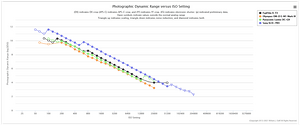The fact is that I am comparing it for my kit lens 12-32, but this is the widest lens I have. Maybe its quality at the edges is not sufficient to correct distortion without IQ impact? At 12mm end this lens has around 6% distortion, but even the so called PRO lenses, like Oly 12-40 or Pana 12-35 have around 5-6% distortion at the wide end.
I think if this is an issue for you, you really should be looking at and comparing to prime lenses. Wide zooms and particularly kit zooms are just going to have more distortion. This is also going to be true for dslrs and other mirrorless - zooms have more trade-offs and one of them is distortion.
Note, I'm not saying your comparisons are correct or that this is / isn't a problem; to each their own. Software correction is a big help, and as noted, most digital systems do these corrections and zoom lenses in particular are designed based on the assumption these corrections will be applied. Most primes though have much less distortion (some variance of course based on other design trade-offs).
But it seems to me that if you believe it is a problem, you really need to try wide primes, as they're mostly known to have significantly less distortion. Horses for courses.
Making claims about this being a specific issue with MFT compared to other systems based only on a kit zoom seems quite off base.












